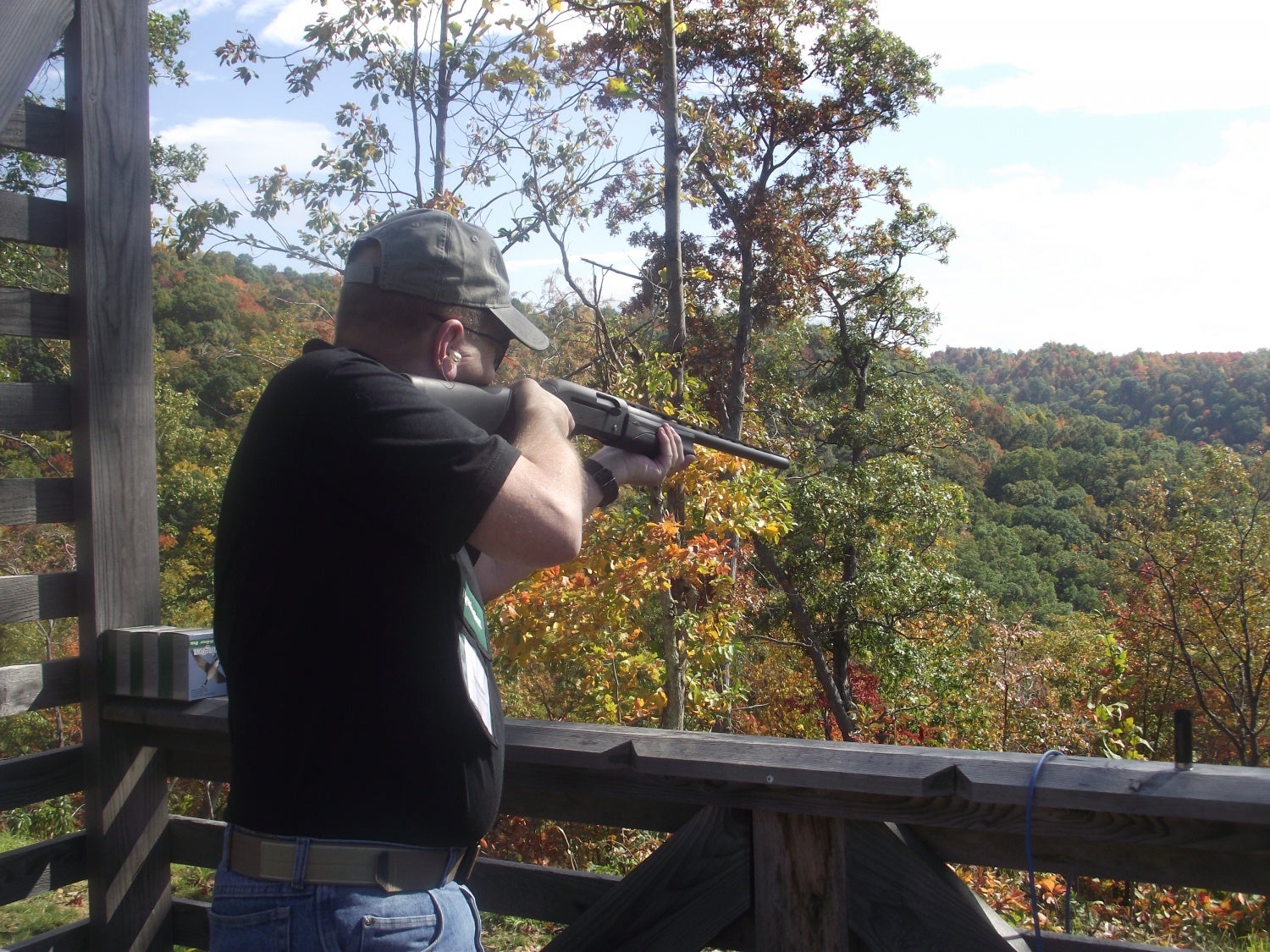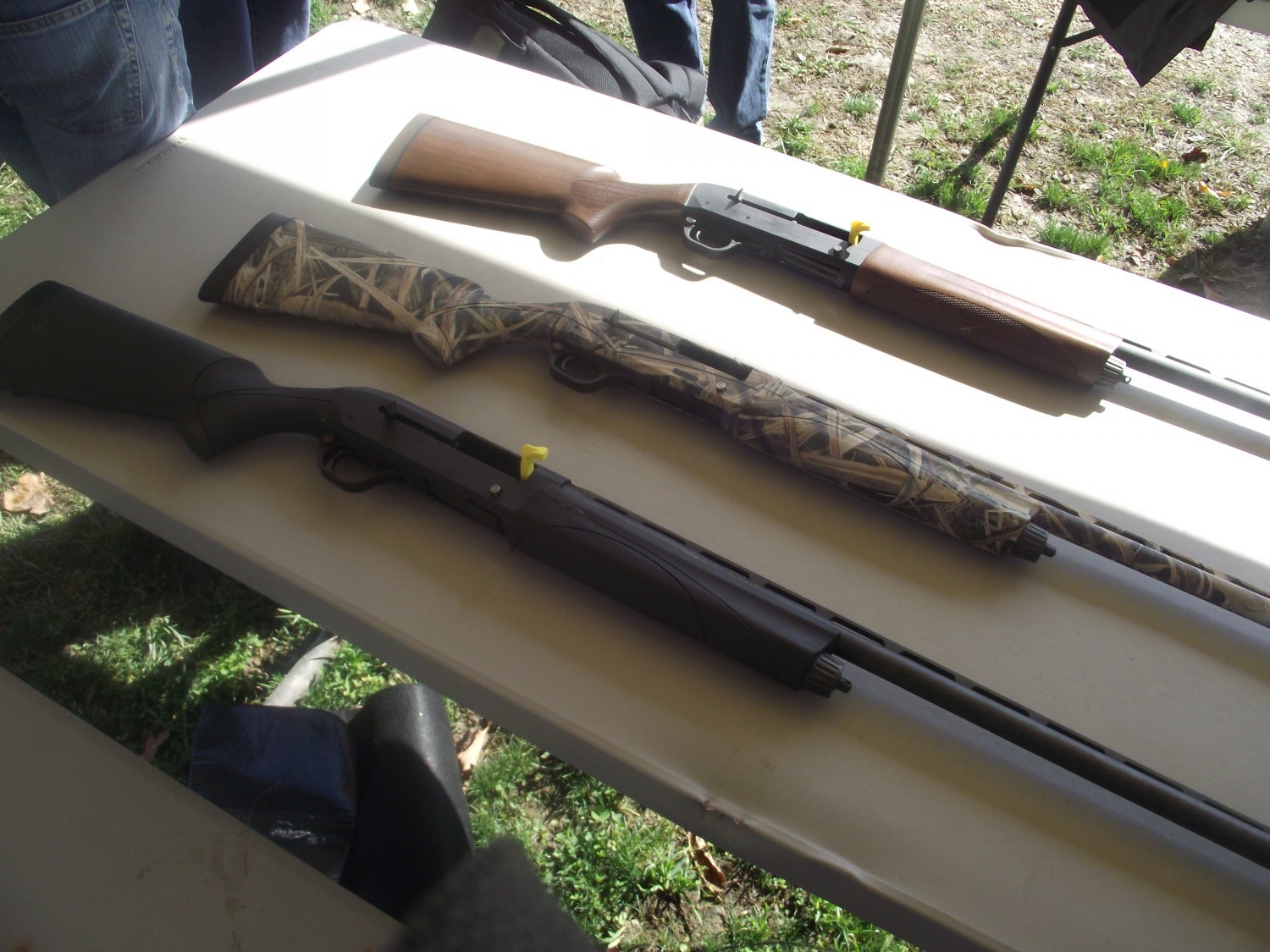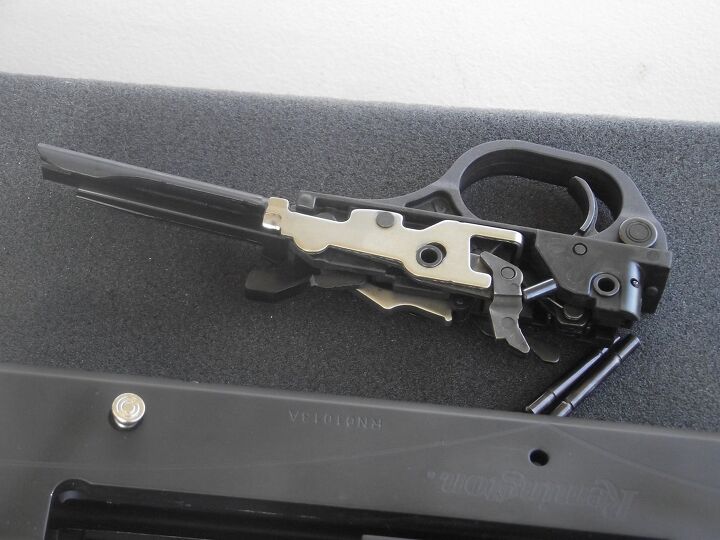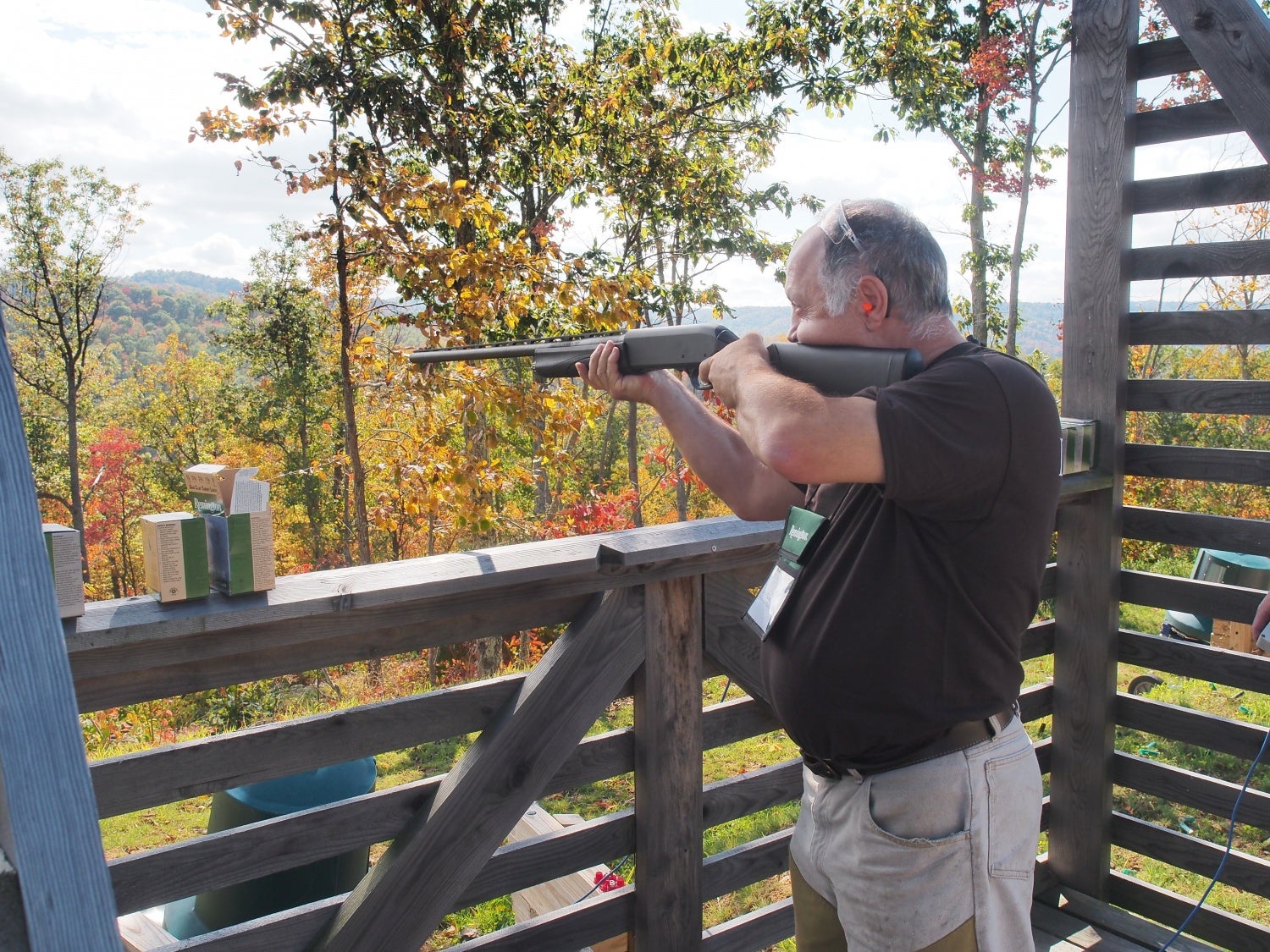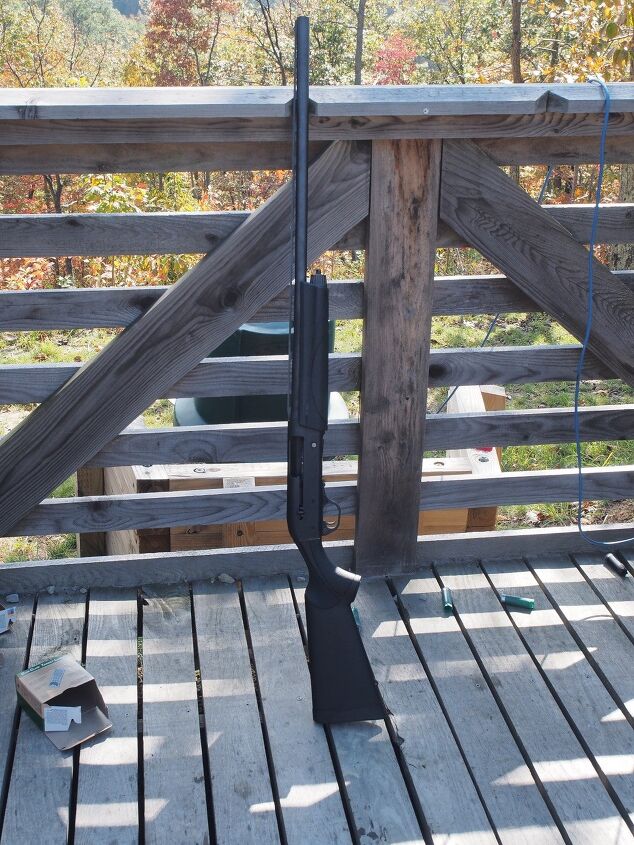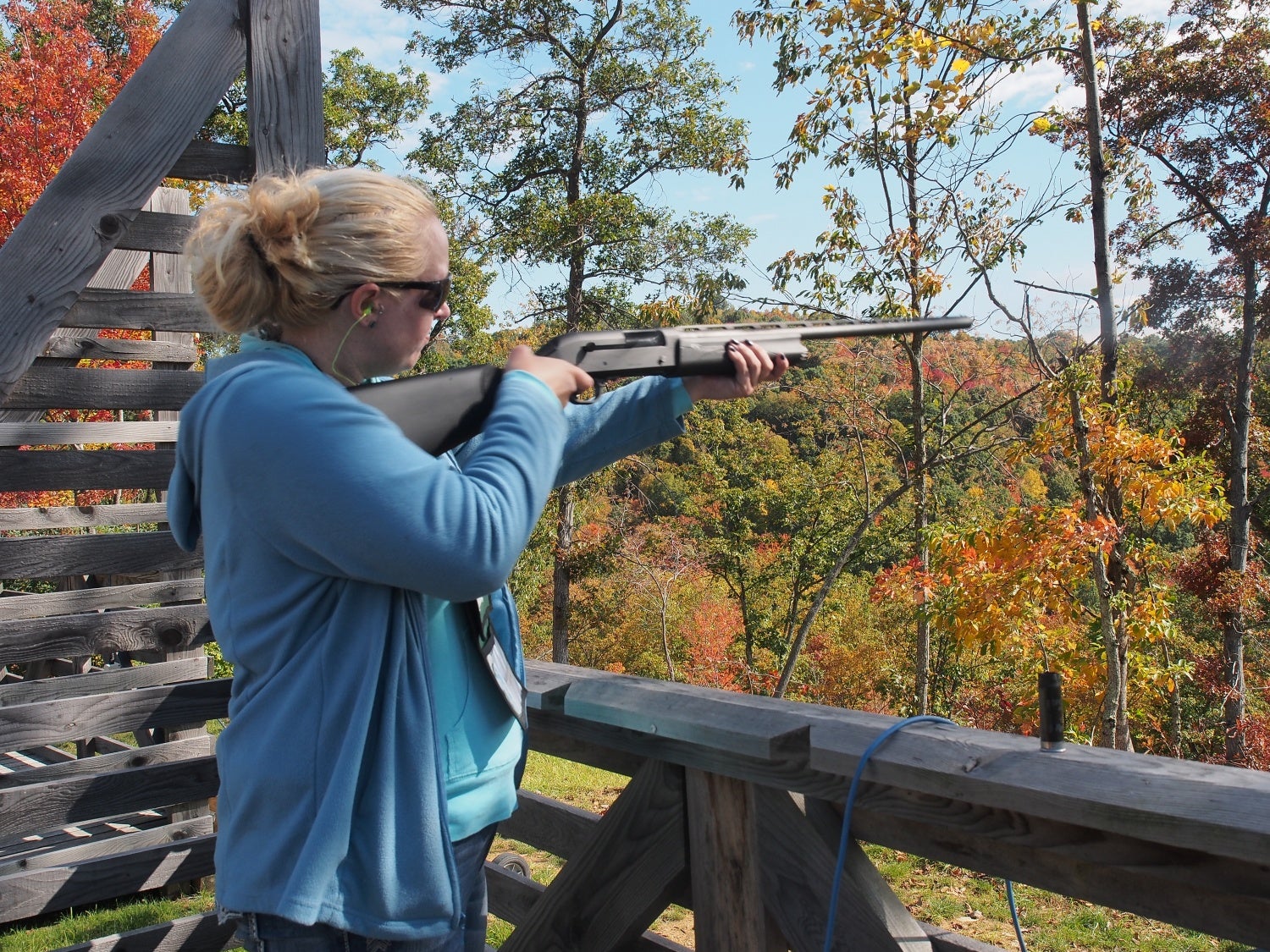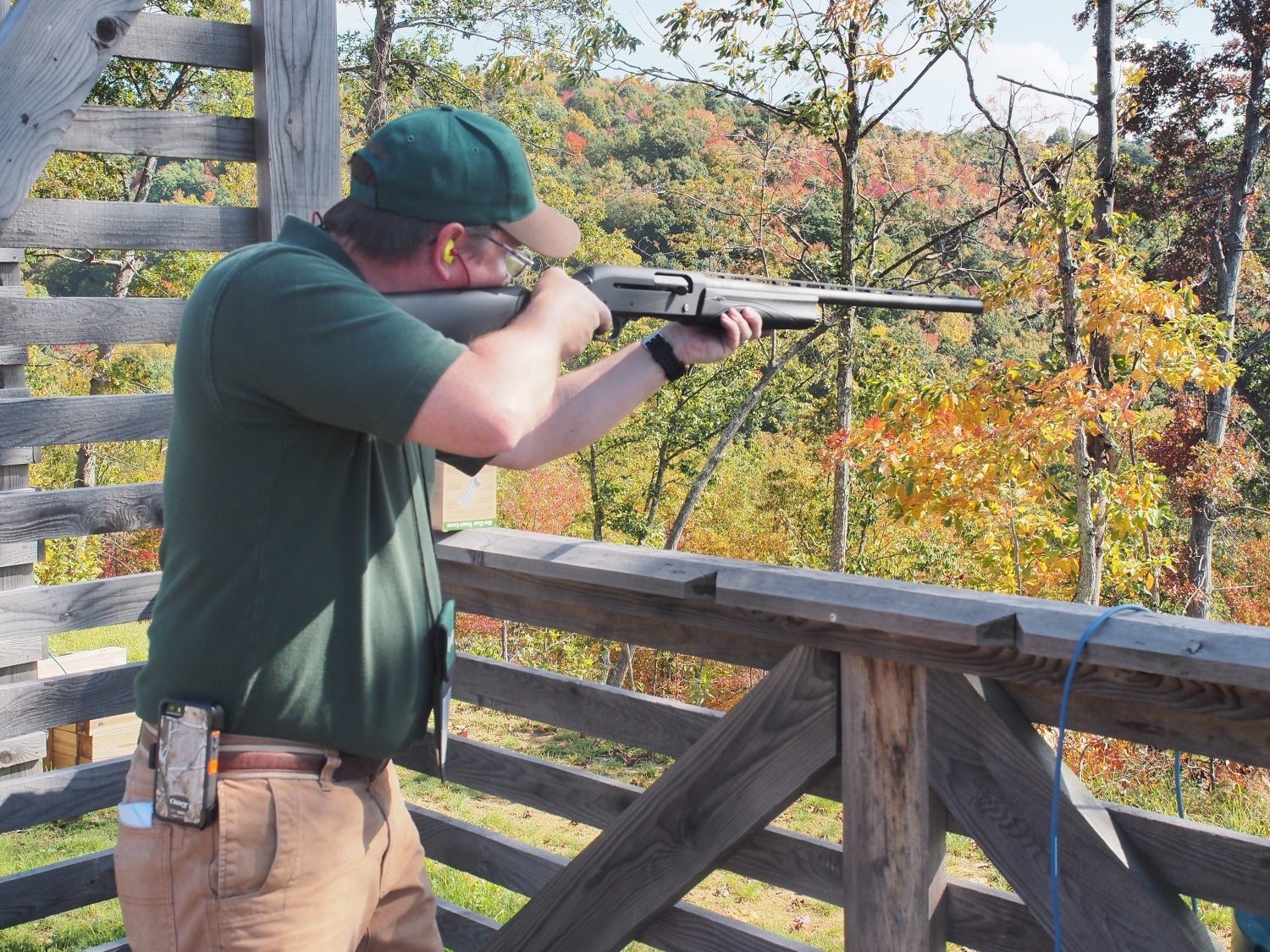Take a brief walk down shotgun-history lane with me. In 1963, Remington introduced the Model 1100, a gas actuated semi-auto shotgun that ushered in a new era of shotguns with noticeable improvements not only in felt recoil but in its consistent cycling. In fact, in 1978 a Model 1100 LT-20 was used to set a firearms record for most shells fired through a semi-auto shotgun without malfunctions or breakage of any kind – oh, and without being cleaned, either. That record was a rather stunning 24,000 rounds, and although other manufacturers have tried to break it, they have yet to succeed. The M1100 remained a favorite among hunters and sport shooters alike for some time, in fact it wasn’t until nearly a quarter of a century later that Remington came out with their next popular shotgun: the 11-87.
The 11-87 featured what was then an innovative self-compensating gas system. High pressures within the barrel were relieved by excess gas being released through two little holes underneath the barrel and the way the gas cycled shells meant the recoil energy was dispersed over a longer stretch rather than occurring all at once. The result was less felt recoil, but that wasn’t all the 11-87 had to offer. The 11-87 gave shooters something they’d been after for awhile: the ability to shoot everything from lighter target loads to heaver magnum loads from the same gun. That meant both 2 ¾” and 3” shells could be fed into the 11-87. The gun even gained a little Tinseltown fame by being used in the Coen Brothers’ movie “No Country for Old Men.”
In the years after the 11-87’s debut there was a shift in the shotgun market. The majority of shotguns used to be made with pride right here in the USA, but in the 25 years following the 11-87’s creation, manufacturing shifted from the United States to overseas. Companies like Benelli – which is located in Urbino, Italy – and Beretta – which is located in Brescia, Italy – have overtaken the shotgun market in staggering numbers. And one of the companies to make a splash in the realm of shotguns made specifically for women, Syren Tempio, has its roots in Italy as well. Franchi, Perazzi, Caesar Guerini – Italian. The shotgun has become not just a foreign market but an Italian one; approximately eighty percent of shotguns being sold here in the States are foreign-made. It’s high time American manufacturers took the market back, and in 2015 Remington is looking to do just that with their new 12-gauge shotgun, the V3.
A quick word about the V3’s predecessor, the Versa Max. The Versa Max was first introduced in 2010, a full 23 years after the 11-87; that quarter-century gap between shotgun innovations seems to be becoming a bit of a habit – until now. What made the Versa Max ground-breaking was the Versa Port which was, indeed, a significant advance in the inner workings of a gas-regulated shotgun. The Versa Port works through a series of ports that regulate internal gas pressure according to the length of the shotgun shell. In the Versa Max, when a 2 ¾” shell was chambered, all 7 ports were left open, while with a 3” shell 4 ports were open and with a 3 ½” shell, 3 ports were open. Those ports help the gun cycle rounds with impressive consistency and also serve to decrease felt recoil. The latter is managed by drawing out recoil energy over a longer time rather than leaving it to one quick action: by drawing out the process and controlling that high pressure, felt recoil is significantly reduced. An added bonus of the Versa Port system is that as the high pressure is released with the shell it cleans itself, In the Versa Max this technology proved itself in more ways than one thanks to its 7 ports, and in the V3 Versa Port technology proves itself to a greater extent with not 7 ports but 8.
The 8th port in the V3 allows for better performance from the pressure-compensating valves in each chamber which translates to a decrease in felt recoil and an increase in performance with 3” shells. In the older technology it was the smaller shells that had greater pressure behind them, and that meant greater performance. With the V3 you have more pressure behind the larger 3” shells, too. The V3 is designed to cycle everything from light 1 ounce loads to heavy magnum loads.
Another improvement over the Versa Max ‘s Versa Port is that the V3’s is also more compact at just 8.36” compared to the Versa Max’s 9.27”. This is a truly compact gas system, and not just because it’s shorter overall. We’re all aware of the importance of shot placement when we’re slinging lead down-range, well, placement is important in the construction of firearms as well. Competitors tend to place their gas systems 9” to 11” down the bore, but Remington places the V3’s SASG2 right in front of the receiver. The result is better balance and an ergonomically designed forend; with the V3, the gun’s weight is distributed centrally, and that makes pointing it not just natural but instinctual.
Speaking of weight the V3 hits the sweet spot at 7.2 pounds, placing it right in the middle of other shotguns. For example, that 11-87 came in at 8 pounds and the M2 American weight 6.9 pounds. At 7.2 pounds the V3 has enough heft to absorb recoil energy while remaining light enough to be comfortably carried during a day of duck hunting.
We were given the opportunity to try out the V3 at a beautiful outdoor range in West Virginia. Its wide-open spaces made it ideal for long guns of all kinds and for the new shotgun we had the use of individual stations for shooting clays. The front of each station was equipped with an automatic trap that was operated by pushing a button.
First we were given a quick run-down of the V3’s operation, specifically its loading options. The V3 can be loaded either by feeding shells into the loading port one at a time, pushing the port open each time, or the port can be locked open for quicker loading. Although locking the port open allows for a bit more speed it’s really more a matter of personal preference with a field shotgun like this first V3 offering.
The V3 will be available with a 26” and 28” barrel, and the shotgun I used had a 28” barrel and was black synthetic. I first loaded it with 2 ¾” shells which were target loads. Before trying the gun on clays I fired one round simply straight ahead in the same direction clays would soon travel. The first shot answered my first question: what would felt recoil really be like? It’s definitely less than that of the average 12-gauge. I own several shotguns myself including some from Mossberg, Winchester, Remington, and Browning, and I’ve fired shotguns from other manufacturers including Beretta, Savage, and FN Herstal. The V3 has no recoil spring in the stock and utilizes the aforementioned Versa Port technology, and the result is a 12-gauge with less felt recoil than many similarly-sized shotguns. Yes, you still feel that kick, but it isn’t quite as sharp as you might expect.
Mounting the V3 to my shoulder felt smooth and natural and the stock was easily tucked under the edge of my collarbone. It’s designed for a slightly reduced length of pull (LOP) and as someone with long arms and hands I would have preferred it be just a bit longer, but it was still comfortable. Down the road there will most likely be other stocks offered including a tactical folding stock and an adjustable stock.
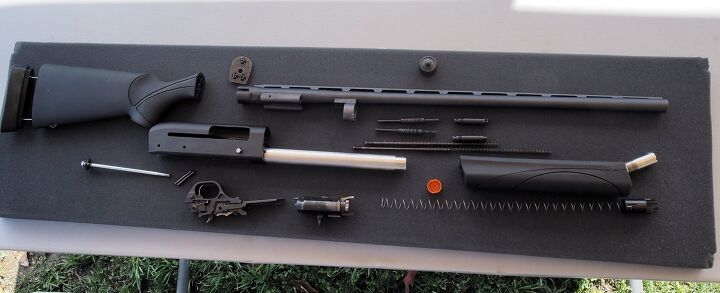
It’s worth mentioning I haven’t spent a significant time skeet shooting. I prefer either targets or live game on the ground, although bird hunting is something I’d like to get into. I mention this because testing the V3 was done using clays. It turns out trying out the V3 this way proved its pointability; this is an instinctually pointable shotgun, and swinging it up to shatter clays was both easy and enjoyable. Too many people forget shotguns are inherently point-and-shoot guns, not take-careful-aim guns like rifles, and a shotgun’s pointability is an important factor in its function. The V3’s balanced construction and the slight contouring to the barrel made shooting it fun and delivered the satisfaction of watching clays being annihilated.
The trigger was crisp and had a nice return; it was neither overly light nor frustratingly heavy. The V3 ate what we fed it, both 2 ¾” target loads and 3” slugs, and had no malfunctions or failures. In fact, during testing the gun had a less than 0.5% failure rate, which is fantastic compared to the 2% (or worse) failure rate of most shotguns. It was an enjoyable gun to shoot and I believe will make a nice field gun both for new and experienced shooters. I’m looking forward to spending quality time with the V3 both at the range and hunting – and, yes, it’s getting some time destroying watermelons this summer.
This field V3 comes pre-drilled and tapped. Although the initial offerings are for field guns with 26” and 28” barrels, Remington said they will be releasing tactical and competition V3’s later in 2015. And who knows, maybe they’ll have a surprise for us at SHOT Show 2015.
Typically this is where I’d put together a suitably stirring/poignant closing, but this time I’m going to use Remington’s own words. They’ve put together a brilliant ad campaign for the V3, building on the very real importance of American-made firearms, and this tag line is from one such ad: “Please don’t buy the V3 because it’s made in America. Blind loyalty was sent packing with the redcoats. Ours is a land where the best man wins. In 2015, we’re proud to say the finest autoloading shotgun in the world isn’t built in Italy, Belgium, or Japan. It was born right here. Powered by our VersaPort gas system and the fierce spirit of competition that only thrives here, where the best shotgun wins.”
It’s about time we took back shotgun production; don’t you want your guns to be made in America? I know I do.
V3 Specs:
Chambered in: 12 gauge
Rounds: 3 (2 ¾” or 3”)
Shell sizes: 2 ¾” and 3”
Sights: Twin bead
Stock and Forend Finish: Walnut, Black Synthetic, Mossy Oak Shadow Grass Blades, Real Tree APG
Barrel: 26” or 28” (Real Tree in 26” only; Mossy Oak in 28”only)
Barrel type: Light contour vent rib
Choke: Rem Choke 2
LOP: 14 ¼
Drop (Comb): 1 ½”
Drop (Heel): 2 7/16”
Weight: 7.2 pounds empty
Overall length: 47” to 49”
MSRP: $895 Black Synthetic/$995 Walnut, Mossy Oak, Real Tree
The V3 has the following features:
• Compact receiver design results in ideal balance and swing characteristics making the SASG2 one of the most natural pointing shotguns you’ll ever shoot.
• Light contour barrel further optimizing balance and swing characteristics.
• Versa Port Operating system with fewer moving parts than 11-87 and other competitive offerings offering more reliability, easier and less frequent disassembly and cleaning.
• Short piston stroke allows for a more compact gas system located directly forward of the receiver resulting in optimized forend geometry, balance and swing characteristics.
• Improved shell cycling reliability
• <=0.5% malfunction rate or 10% better than best competitor
• No recoil spring in stock to get gummed up or rusted like competitive offerings. More flexibility in stock offerings especially in upcoming Tactical offerings (Folding stock)
• Reduced bolt retraction force, easier to use for consumers
• Recoil same as Versa Max (if not better!)
• Rotating bolt head for superior round control and increased reliability.
• Weight target of 7.2 lbs versus 8.25 lbs 11-87 from Remington
Phil Note:
Katie pretty much summed the V3 up very well. I can add that it’s the easiest shotgun to swing on target that I’ve ever used. It really feels lighter than it’s 7 pounds. I attribute that to the weight being very near the shotguns center. Considering the gas system is directly in front of the receiver it only makes sense it would be a natural pointer and fast on target. Recoil is also less than I expected. Remington says it’s the same as the Versa Max but I think it’s lighter even with 3 inch magnum shells.
The first time I picked it up I was able to hit 12 out of 12 clays. I was impressed with the V3 being able to do that having never shot one before. Katie shot a video of the last few clays.
In short I want one and I can’t wait to see the Tactical model when it comes out.
 Your Privacy Choices
Your Privacy Choices

